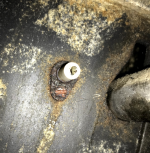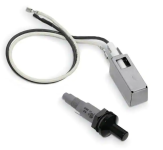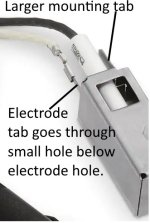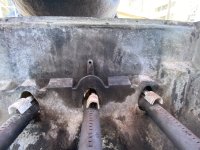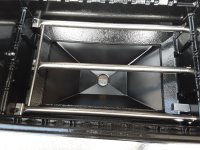The design of the original igniter in the very first generation of Weber gas grills was held in place with a screw. That's why we have two holes in the cookbox rather than some other arrangement.
View attachment 52229
There was no gas collector hood...the electrode (missing in this picture) was bent and directed towards the burner and the spark would jump to the burner. This was problematic because the screw would get frozen in place and impossible to remove...so Weber designed the hooded system that we are stuck with today, to fit cookboxes that weren't originally designed for this style of igniter. That's also why the hood is so thin...the metal has to be thin enough so the a tab fits through the original screw hole and bent over far enough to support the igniter electrode which is mounted to the hood. The angle that the tab is bent isn't critical...its purpose is to support the ceramic electrode and hood assembly and provide a ground connection for the igniter.

